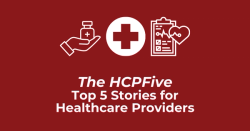
OR WAIT null SECS
How To Go About Proximity Challenges for Food Allergy Anxiety in the Clinic
In a recent review, experts answer frequent questions allergists have about conducting proximity challenges in patients with food allergy anxiety.
In a recent report, experts reviewed what allergists should consider when conducting in-office proximity challenges for patients facing food allergy anxiety.1 The review was co-written by Katherine K. Dahlsgaard, PhD, ABPP, from Brave is Better LLC - Therapy and Consulting in Philadelphia, and Megan O. Lewis, MSN, RN, CPNP-PC, from Children’s Hospital of Philadelphia.
Food allergy anxiety can present in several ways, such as parents of a 7-year-old patient requesting a nut-free table at school, or a 13-year-old avoiding social events and refusing to eat without their parents after an anaphylactic reaction 6 months ago.
Nearly a decade ago, Chitra Dinakar and colleagues recommended proximity food challenges in regular clinical practice to show that smelling or touching an allergen is safe.2 The report addressed numerous questions on proximity food challenges, such as how to convey the right attitude, assess whether anxiety is excessive, and conduct effective challenges.1
“Throughout, we organize this review by answering the most frequent questions we receive from colleagues, trainees, students, and our patients regarding the ins and outs (and ups and downs!) of conducting successful proximity challenges," Dahlsgaard and Lewis wrote.1 "The intended audience is both allergists and therapists."
Most Frequently Asked Questions (FAQ):
“What is the difference between exposures and proximity challenge?”
Although this report uses exposures and proximity challenges interchangeably, the authors noted that exposures for food allergy anxiety do not have to be an actual allergen. For instance, a patient with a tree nut allergy may irrationally fear coconut.
Why are proximity challenges effective?
They target flawed beliefs by showing their “allergen” is safe. Patients are more likely to learn this through smelling or inhaling than by a doctor saying so. These challenges help patients recognize the difference between anxiety symptoms and anaphylaxis, while building practical coping skills, such as hand washing or communicating dietary needs.
How do I assess whether my patient's food allergy anxiety is excessive and if proximity challenges are needed?
Focus on unnecessary avoidance intensity and frequency. Useful tools include the Scale of Food Allergy Anxiety (ages 8 – 18 years), the Food Allergy Anxiety Scale (≥ 18 years), and Worry about Food Allergy or Impairment Measure for Parental Food Allergy-Associated Anxiety and Coping Tools (for caregivers). Providers can also ask specific questions:
1. Are you comfortable keeping allergens in your home?
2. Can you comfortably sit next to someone eating your allergen?
3. How many restaurants can you comfortably eat at?
4. What do others with similar allergies do that you don’t feel able to?
What are good proximity challenge examples?
Start by explaining the rationale, demonstrating it yourself, and repeating it 2 – 4 times during the visit with short breaks. Use varied fear-inducing stimuli (e.g., coconut flakes, drinks, and candy for coconut anxiety). Avoid over-reassurance; instead, praise functioning.
Patients should receive safety education before and during exposure. A handout debunking food allergy myths with peer-reviewed sources also be helpful to patients.
“Do proximity challenges have to be distressing for the patient?”
Moderate-to-high distress tends to lead to quicker fear extinction.
Are proximity challenges safe and ethical?
Yes, but no activity is 100% safe. As for ethical concerns, the 2023 Anaphylaxis Practice Parameter emphasizes ingestion as the primary anaphylaxis trigger, not touch or inhalation.
Who can do proximity challenges?
The provider should have excellent knowledge of basic safety guidelines and relevant literature on safe causal contact with allergens, as well as an understanding of the role proximity challenges have on alleviating anxiety. This can include allergists, physicians, and therapists.
“What attitude should I convey to my patients regarding proximity challenges?”
The authors recommend saying, “Isn't this great?!?” You should show excitement, compassion, and positivity.
“When should I start proximity challenges in my treatment for excessive food allergy anxiety?
As soon as you can.
Do I need an exposure hierarchy?
No. Focus on what’s most relevant, such as prepping for an upcoming restaurant outing by simulating that setting.
Who brings the materials for proximity challenges?
It is best if patients bring their allergens to the appointment, although providers may keep 9 of the most common allergens in their office.
“What about relaxation training and cognitive restructuring?”
Relaxation training can be inefficient for patients with food allergy anxiety. Rather, cognitive restructuring is more effective. Have patients reflect post-challenge on what they expected, what happened, and what they learned.
What should you consider for proximity challenges with child and adolescent patients?
The authors frame challenges as “bravery challenges” and “facing your fears” for children and tweens, and “hypothesis testing” and “distress tolerance” for adolescents.
Why do I assign proximity challenge homework?
This reinforces fear extinction learning. The authors recommend challenges twice a day in different locations of the home, or even eating 3 meals beside an open jar of peanut butter for a week.
What if the main anxiety is epinephrine use?
Address fears with each prescription. It can also help if patients self-administer epinephrine in the office, under an allergist's supervision, to reduce fear.
What if patients want OIT or omalizumab out of anxiety?
If the patient has never had an allergic reaction, treat anxiety first. Use an oral food challenge to confirm the allergy before starting therapies.
References
Dahlsgaard KK, Lewis MO. Want to help your patients with food allergy anxiety? Do proximity challenges! Ann Allergy Asthma Immunol. 2025 Mar 13:S1081-1206(25)00099-7. doi: 10.1016/j.anai.2025.02.020. Epub ahead of print. PMID: 40088945.
Dinakar C, Shroba J, Portnoy JM. The transforming power of proximity food challenges. Ann Allergy Asthma Immunol. 2016 Aug;117(2):135-7. doi: 10.1016/j.anai.2016.06.015. PMID: 27499540.


